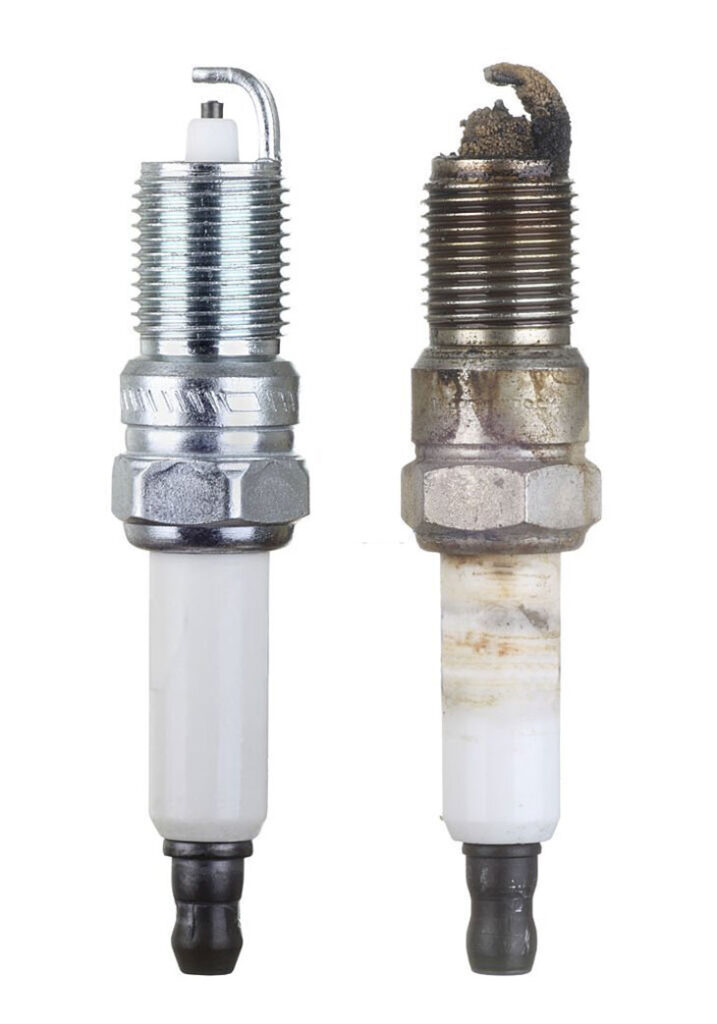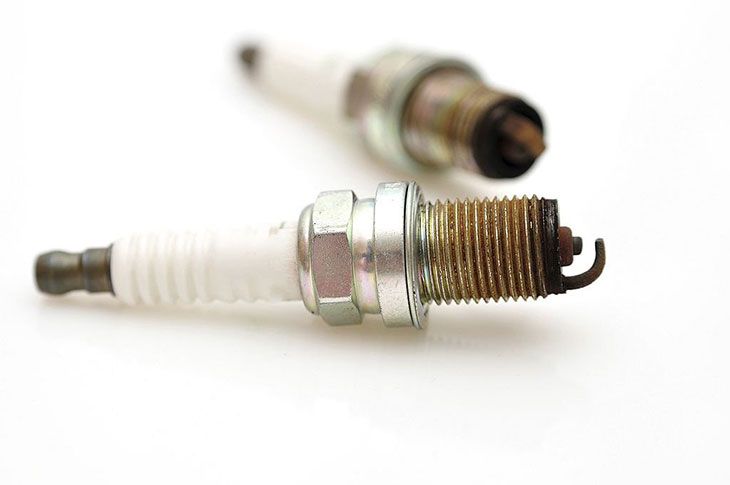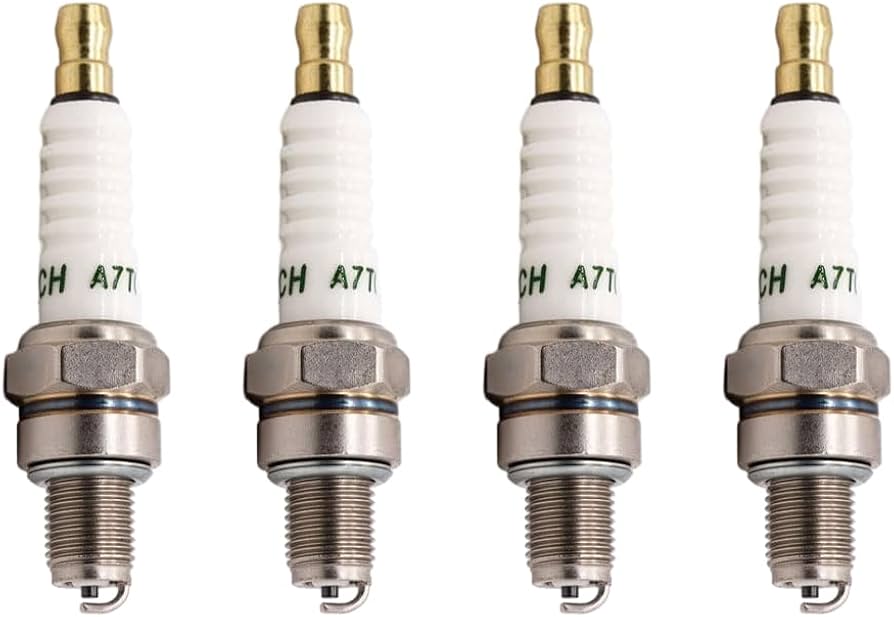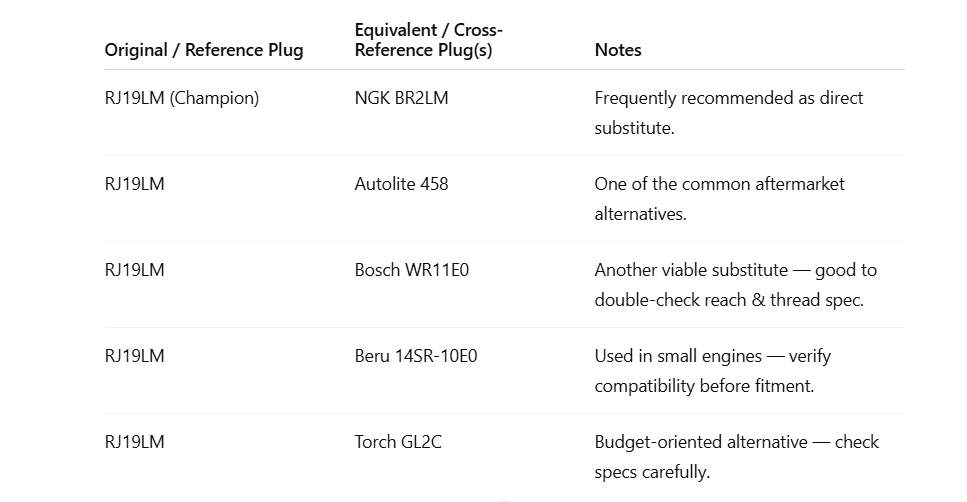“Spark plug smells like gas” usually means incomplete combustion, often due to a flooded engine or faulty injectors. It’s important to address the issue to prevent engine damage.
Ignoring the condition of a spark plug is a more serious issue especially when there is a burning smell. If it is soaked in oil and smells like gas, the engine is having a problem. There, it is oil on a spark plug, and it can be covered in fuel as pointed out before. Another issue is the glowing car engine warning light. It is a problem, and it is on when the engine is doing something that is ‘not normal’ in any possible way.
In this guide, there is more in-depth description of phenomena and reasons of problematic spark plug covers, which problems can stem from, how to deal with it, and essential of all, how to fix it.

Contents
The purpose of spark plugs and their functions
An essential part of a car’s ignition system, spark plugs and their functions. As a result of the powerful combustion, the car engine works, making the vehicle move upon release of the throttle. Spark plugs creates tiny explosions in a combustion chamber of the engine when they get ignition pulse, and there is a space with fuel and air. The engine then goes through a powerful combustion cycle which in turn makes the car’s engine work.
To achieve high gas mileage without issue, an engine needs proper management of the ratio of air and fuel. An overly fuelled engine, however, could lead to combustion which is incomplete and as a result, unburned fuel could settle on the spark plugs leading them to smell of gasoline. Therefore, spark plugs that smell of gas is a strong sign that there is an issue with the engine and fuel supply or combustion.
What does it mean if a spark plug smells of gas?
In any engine, there is always the risk of unburnt combustion chamber fuel gas escaping. This unexplained phenomenon is connected to some engine problem, and possibly the source of the “gasoline odor.”
The problem could be cleaning spark plugs, diagnosing a malfunctioning fuel injector, and anything else that sensor problems encompass.
In any case, it is prudent to note, that to avoid aggravating the problem, timely action is necessary for remediation of the root cause.
Common Causes of Spark Plugs Smelling Like Gas
There is an abundance of probable problems for a spark plug that has gas odor. In order to understand what problems we are potentially working with, we will break each case down to accentuate it more clearly.
1. Flooded Engine
A flooded engine is an engine that has an excess of fuel that the combustion engine is able to ignite. This is what occurs when there is a build up of fuel within the combustion chamber plus the spark plug that gets submerged within the fuel, causing the combustion chamber to drown. This occurs to anything that has an engine, and is for instance riding mowers, and is generally termed for anything associated with ‘too much fuel’ when starting the mower.
Extreme cold is said to be the most unforgiving, along with the mass airflow sensor issues, the dysfunctional fuel injectors and the splintered fuel pressure regulator. No one wants to be that broken.
How to Fix: Among the most effective and easiest ways to restore functionality to a flooded engine is to let the car sit and idle to give the fuel as well as the engine time to cool down, and evaporate, respectively. You could also try to turn on the car and in the process attempt to push the gas pedal to get the fuel out, which in this case is more than necessary.
If this method does not work to remove the excess fuel, there is most likely a stuck fuel injector, along with a few broken sensor components which is more likely than not the center feature to this issue.
2. Malfunctioning Fuel Injectors
Malfunctioning fuel injectors are concerning because they are responsible for introducing fuel into the combustion chamber and controlling the flow and pressure of the fuel. If the fuel injector starts working erratically or gets a blockage, it starts injecting more fuel than the chamber requires. An engine with an excess of fuel is said to be running too rich. The result of poor combustion is the engine lacking power and the spark plugs begin to emit a peculiar petrol odor.
Injectors malfunction because of an imbalance caused by a fuel air mixture and a leak which causes fuel flooding in the engine. If the spark plugs have an excess amount of fuel, a distinctly unusual petrol smell can be detected.
How To Fix: Firstly, fuel injectors need to be investigated to see if they are the problem or something else. If a fuel injector cleaning is deemed necessary, a qualified auto mechanic should be the one to perform the service. If the fuel injectors are determined to need replacement, they should be replaced as well. Maintenance in the form of fuel injector cleaners is helpful to break up and prevent clogging and help better fuel injector functioning.
3. Dangling Angsts Cantussmeters
Throughout the course of oxygen sensors ‘lives’, they are responsible for a few things, and in the present case the oxygen ‘consumed’ is that present in the exhaust. They report to the ECM and tell the engine how much fuel there is and how much air there. When fuel injectors have a malfunction, an engine is at risk of the excess amount of fuel which is easily available at the engine to the spark plugs and is ignited. Then a strong disgusting fuel smell is detected.
How To Fix: Figure out if the problem is the fuel injectors and if so, take the vehicle to a mechanic to clean the fuel injectors. If the injectors are broken, then they must be replaced. Maintenance practices like using fuel injector cleaner also helps to avoid clogging and helps with the overall performance of fuel injectors.
4. Damaged Spark Plugs
Spark plugs are worn out because of extreme and high temperature within the combustion chamber. Spark plugs do not function the way they are meant to function, and because of this are said to be worn out and carbon-fouled. Damp combustion leaves behind unburned fuel that the spark plugs send forth, which is the reason why there is an odor of raw gasoline.
Another outcome of faulty spark plugs is an uptick in the incidence of misfires, unstable idling, and general decrease in the capacity of the engine. Worn spark plugs are unable to create enough spark needed to ignite the air-fuel mixture, which in turn means they are lost the ability to perform something referred to as fuel vaporization.
How to fix is: Do not leave the plugs in without setting the correct voltage. Like other details, there is a standard set of procedures to follow for vehicles. You will then search for the specific guidelines for your vehicle in that document if so.
However, the manufacturer recommends replacing the spark plugs after the car is driven for more than 30,000. Up to 100,000 miles, as a general rule of thumb. However, the real guidelines might be different depending on other vehicles.
5. Starting Cold Engines
Starting a car during cold weather isn’t the easiest of tasks. Most of the time during cold starts on a vehicle, a richer fuel vix mix of fuel and air into a cold mist is more likely to be used. This is when the fuel that is sent to the Engine is more and the Engine is trying to reach. This is something that no one can deny actually happens during cold weather. This is actually the case, the fuel more fuel is present, the Engine is cold and not warming is not the case.
In this case, it can be normal to observe when the faint smell of gasoline is present, and not much worrying can be done because that is the engine. It is expected to be the case that the engine warms up and the fuel mix stabilizes.
How to fix: Your vehicle, is as the fuel refrain, is set to extreme cold, in which case the car needs to be stationary for a while in and warm up. This is so it can reach and assist in the ideal temperature to evaporate further fuel which would go to the spark plugs.
Symptoms to look for
If the spark plugs are blocked or coy, there is a high probability that there are more troubles which can potentially impede the progress or functionality of the engine.
Each condition has typical signs and symptoms.
Misfires: While a car is moving, a sudden jerk would indicate a drop level in the car. This is an indication that the car is indeed undergoing a ‘misfire’. A spark plug that fails to ignite the ‘fuel and air’ mixture is said to ‘misfire’. In a case of a ‘misfire’ where the car takes an abnormal amount of time to ‘power’ up, there essentially is no power, and the car takes an abnormal amount of time to ‘supply’ the needed energy. When driving a car, misfires are a cause of major concern because of the time that is lost trying to ‘power’ the vehicle.
Difficulty Starting the Vehicle: Failing to spark is a ‘soaking’ condition which means that the spark plugs have been submerged in fuel. In order to easily spark there is a condition known as fuel soak. In this case, the spark plugs have been submerged in fuel.
Rough Idling: In cases of, much of the times, while the engine is rough there is a fuel smell. When the fuel in the combustion chamber is not burned, there is a clear indicator that there is a problem. When the fuel in the combustion chamber does not burn, it is a good indicator of something missing as combustion is inefficient.
Poor Acceleration: When a vehicle is sluggish, one of the more prominent reasons, the sequence of spark plugs responsible for the amount of power that is being delivered to the engine. When the engine is filled with spark plugs that do not fire in sequence, there is a loss of dramatic performance. The loss of baffling acceleration is what the driver will experience.
Increased Spending on Gas: Drivers will find greater expense in refilling their tanks more frequently. The car will now have to be subjected to a more expensive spending plan in order to fill the tank more frequently. The fuel and air mixture on the car will make it more expensive to use. Drivers will have to be subjected to spending more than the 3×3 plan.
LED Indicator: The Spark plugs and other parts of the system will trigger the check engine light. This is the default DH version of how spark plugs works. It can be ‘plugged in’ to an OBD-II and the scan can pull out some very different and very silly explanations. It is descending on and neglecting most other parts which are left undone for a very long time.
How to Diagnose and Fix Spark Plugs That Smell Like Gas
Now that we’ve covered the common causes of spark plugs smelling like gas, let’s look at the steps you can take to diagnose and fix the issue:
1. Remove Spark plugs: Before starting the rest of the procedure, let the spark plugs undergo an inspection. In this case, we will take one by one through the process of observing the presence of burning signs, wearing signs, and the loss of fouling along with the presence of a collection of carbon. When plural spark plugs have been identified and more than one is dirty, cracked and/or other damaged, they of course need to be exchanged with a set of new spare plugs.
• Note: When finding the correct spark plugs to use, always consult the owner’s manual to make sure you have the right make and model of the car.
2. Fuel Injectors: Investigate fuel injectors in order to identify any possible blockages or leaks. A fuel injector is capable of delivering an excess amount of fuel to the combustion chamber. A dirty fuel injector and a fuel injector that is malfunctioning may both cause trouble. It is possible to replace a set of faulty fuel injectors and it is also possible to replace a set of injectors by an experienced mechanic.
3. Consider the Function of Oxygen Sensors: Oxygen Sensors can be crucial to the operation of the combustion engine. An example of broken or malfunctioning Oxygen Sensors could result in the ECU giving instructions to the engine to run on aggressive fuel. Oxygen Sensors need to be checked and replaced if broken.
4. Consider The Temperature of The Engine: Let Engine Splash warm up to the necessary operating temperature required to avoid the engine stalling or struggling to perform. This allows the engine to run at optimum temperature which in turn, reduces the chances of a rich fuel mixture.
5. Other Relevant Work: Important maintenance of the vehicle, such as replacing or cleaning fuel injectors, replacing combustion spark plugs, and replacing the air filter. This avoids the situation whereby the spark plugs start smelling excessively of fuel.
Frequently Asked Questions
Here are some FAQs about spark plug smells like gas –
1. If the spark plugs smell like gas, can I drive the car?
Driving the car during any point in time is a huge mistake. If the gas smell is so potent that it can be perceived in a strong way, then this is a serious condition. This is something that can cause the engine to be damaged severely if the car is driven under such conditions.
2. What is the interval of the replacement of spark plugs?
You should change the spark plugs of a vehicle after every 30,000 to 100,000 miles, depending on the vehicle and the spark plugs used.
3. Can broken fuel injectors cause fuel odor on a spark plug?
Yes. A broken fuel injector will lead to a skipped blockage on both the closed and open ends of the valve. The unburnt fuel and the gas also is due to the overflowing of the combustion chamber where fuel is not ignited at the spark plug. This is where fuel odor comes into the picture.
4. What does it mean when a spark plug is black and oily?
Most of the time, a car suffering from a ‘black and oily spark plug’ is a car suffering from combustion chamber issues. the mixture within is deemed to be too thick and too rich of oil and/or fuel. This most likely occurs when fuel injectors malfunction, piston rings are broken, or the PCV hexon doesn’t work correctly.
5. Can I perform spark plug replacement on my own?
In the case of car owners who have background knowledge on their car, it is not a difficult task. The difficult is when a person is shocked and does not know or understand anything about the problem. In this scenario, it is better to go to a mechanic to prevent mistakes or damage that could be caused by doing it independently.
Conclusion
Leaking spark plugs may signify complications that lie beneath the surface. An engine filled with gas, broken fuel injectors, or dysfunctional oxygen sensors are issues that arise. These are problems that one should not disregard, as they severely impact engine functionality. One performs gas maintenance, during which the engine should be thoroughly examined. Broken items should be replaced as well.
These practices are the most efficient means of making the engine operable which in turn eliminates the gas odor. More intricate tasks should be left for skilled mechanics. This will help in avoiding a messy and incomplete job.





